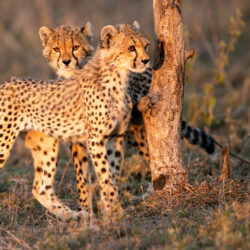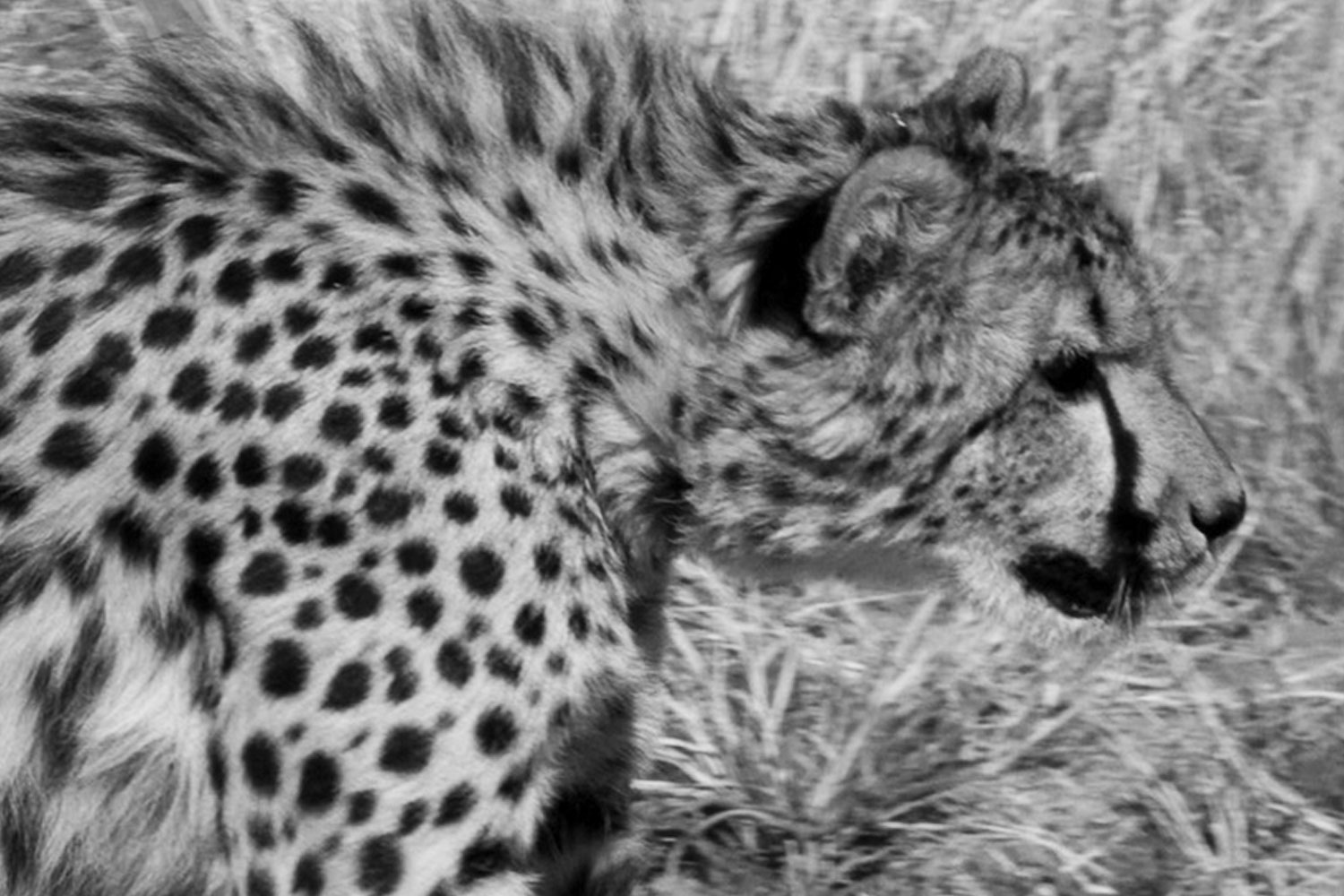The Spotted, the Spotless, the Striped and the Blotched
-

- by Meredith Hanel March 5, 2019

When we think of spotted animals, cheetahs are probably one of the first to come to mind. This defining feature is in the name cheetah, thought to be derived from the Hindu word chita for “spotted one”. Cheetahs have about 2000 spots and each has a unique pattern that can be used in wildlife management to identify individuals. Across the animal kingdom, nature provides an array of signature looks, from spots to stripes to splotches and blotches, that have captured the curiosity of numerous scientists. They are finding that these different pigmentation patterns arise from shared biological and mathematical rules.
Learning from nature’s exceptions
The rare king cheetah has such a different coat pattern that it was thought to be a different species of cheetah. Overall it is darker, with large black splotches and stripes along its back. The Cheetah Conservation Fund was part of a research team that discovered that the king cheetah coat pattern is due to a mutation in the gene called Taqprep.
Mutations in the Taqprep gene were first discovered to affect coat colour in domestic tabby cats. Tabby cats with the normal Taqprep have a pattern of narrow, vertical stripes on a light background known as the mackerel pattern because it resembles fish bones. In tabby cats mutations in the Taqprep gene cause a coat pattern called blotched, which scientists noticed was similar to the expanded dark regions of the king cheetah. Taqprep has a role in establishing dark and light regions on the skin during development. The patterns are on the skin correspond to patterns on the fur.
Even rarer than seeing a king cheetah, is spotting a spotless cheetah. A cheetah with no spots was seen at the Athi Kapiti Conservancy in Kenyain 2012, nearly a century after the last sighting was recorded. Instead of traditional spots, up close this cheetah had hundreds of tiny freckles on its back but from far away looked tan. Some experts have suggested that this spotless cheetah could be mistaken for a lion, which could be an advantage. As far as patterned cats go, cheetahs are an exception since their habitat is different from most other patterned cats such as tigers and leopards who live in shadowy forest where their patterns provide camouflage. Cheetah spots do seem to help hide them in the tall grass.
Pattern formation in animals
Biology tells us that during development genes are turned on at specific times and in specific locations, a process which sets up many patterns from body shape to skin pigmentation. Mathematical models suggest that pigment patterns on the skin of all animals could arise from a common underlying mechanism. A type of model called reaction diffusion shows that it is possible to arrive at many striped, spotted or intermediate patterns that we see in animals by varying the ways two molecules diffuse across the developing skin.
Imagine that during skin development molecule A triggers pigment production and also turns on production of molecule B which inhibits pigment. If the inhibitor molecule B diffuses faster than molecule A, it forms a barrier of no pigment surrounding a pigmented spot or stripe. These models incorporate waves of diffusing molecules and show that will small tweaks to parameters we can arrive at specific pattern types like cheetah versus leopard pattern, yet with individual differences between individuals much like how human fingerprints are unique.
Have you noticed that cheetahs have stripes on their tails? Reaction diffusion models predict that the spot pattern on the cheetah tail would should change to stripes due to the narrow width and that the wider leopard tail should have spots almost to the tip, which it does. The pigmentation puzzle is far from being solved and there is no doubt nature will continue to provide clues for curious scientists to follow up on.
Find out more about reaction diffusion in this MinuteEarth video: “Can Math Explain How Animals Get Their Patterns?”
References
Comparing cheetahs and king cheetahs. (n.d.).
How the cheetah got its stripes-a genetic tale. (n.d.).
Kaelin, C. B., Xu, X., Hong, L. Z., David, V. A., McGowan, K. A., Schmidt-Küntzel, A., . . . Menotti-Raymond, M. (2012, September 21). Specifying and Sustaining Pigmentation Patterns in Domestic and Wild Cats
LeBeau, D. (2018, January 17). What Exactly Is a Mackerel Tabby Cat?
Libretexts. (2018, December 20). 7.1: Turing Patterns to Generate Stripes and Spots.
Saey, T. H. (2013, September 23). How the cheetah loses its spots.
Service, M. F. (2012, April 25). The lesser-spotted cheetah: Rare big cat without traditional markings sighted in wild for first time in nearly 100 years.
Spots and Stripes. (2013, April 29).
Top Cheetah Facts. (n.d.).
Why the leopard got its spots: Relating pattern development to ecology in felids. (n.d.).
Wollard, K. (2012, November 30). How Come? Why does a cheetah have spots?
Woolley, T. (2018, September 19). How animals got their spots and stripes – according to maths.
Stay up-to-date...
with the activities of Cheetah Conservation Fund in Canada, Namibia and Somaliland. We send semi-annual newsletters and info about special events and initiatives. We do not share your email address with any other organization.
Related Reading
-
November 14, 2024
Let’s #SaveTheCheetah in the Wild Together! -
January 5, 2024
CCF 2023 Highlights – What a Year!



